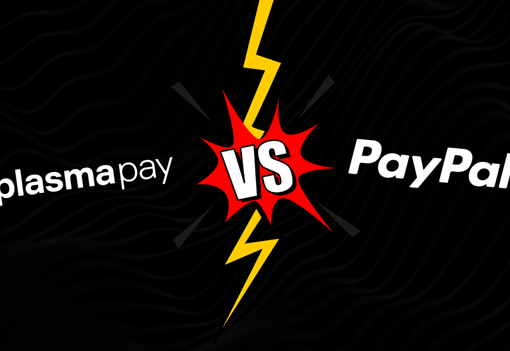If the current COVID-19 pandemic has exemplified one thing, it is that our individual actions have consequences for all of us. Unfortunately, human nature propels the majority of humankind to put its individual interests first, and it takes a truly severe crisis to open our eyes to the interconnectedness of our actions.
It is through assessment of real-life stress tests that the blockchain industry’s collective immune system develops the necessary resilience, and this is of the utmost importance, as the world’s total unpreparedness for the COVID-19 threat clearly showed.
The unprecedented meltdown of prices across crypto assets caused by the global pandemic, with Bitcoin (BTC) shedding as much as 47% of its value intraday from March 12 to March 13, calls for a rigorous analysis of the most recent events and a review of how crypto lenders reacted in order to protect their customers.
Crypto lending 101, and the need for liquidations
Any significant crypto lender has two major lines of business: crypto-backed lending and earn interest products. Simply put, crypto-backed lending is when clients deposit crypto assets as collateral with a crypto lender in order to receive a loan. This happens without credit checks, as the loan is secured by the underlying collateral. With earn interest products, clients add funds to their accounts with a crypto lending company in order to earn interest on their idle assets.
While some companies might use the funds received on earn interest products for a myriad of trading strategies and directional bets on the market, the general case states that a crypto lending institution should be using the funds received from earn interest products to finance crypto-backed loans for its customers.
It is important to know what the company you are entrusting your hard-earned cash with is doing with your funds and how your assets are being protected. This knowledge makes all the difference for your financial success, especially during times of immense volatility.
Essentially, trustworthy crypto lenders ought to be completely transparent as to what they do with the funds their clients are earning interest on. While I am referring to the crypto lending space, these conclusions can be projected to any asset-based lending business and any financial institution.
In the case of the recent market downturn, crypto lenders across the board were obliged to deal with liquidations.
Let’s talk about the elephant in the room: liquidations
Responsible crypto lending enterprises must at all times protect the interests of both the borrowers and the people funding the loans; those earning interest on their assets. During the market meltdown, this meant that many companies had to liquidate clients’ assets.
Contrary to what many believe, trustworthy lenders do not enjoy liquidating clients’ collateral, as this brings them great distress. Liquidations go against the very essence of sustainable crypto lending business models as they shrink the loan book and reduce revenue.
Still, lenders have a fiduciary duty to their customers. Considering that there are no credit checks, the collateral that borrowers pledge in order to receive a loan is what guarantees the funds of the clients earning interest on their assets with the same company. Thus, a trusted crypto lender’s protection mechanisms are not limited to a certain sum and remain in place for any amount.
Consider Company A vs. Company B.
Company A transparently informs its loan customers that if the collateral backing their loans drops below a certain point and they do not add more collateral or repay part of their loans, the company will need to automatically liquidate their assets to ensure that the people who have funded their loans do not lose their funds.
Now, compare this with Company B, which takes no interest in price volatility and tells its loan customers that they can take their time to top up their collateral or repay their loans since there will be no liquidations in the meantime, even when the collateral becomes insufficient to cover their outstanding loans.
Would you ever consider entrusting any form of money to Company B? Of course you would not.
If for some reason you would consider placing your funds with Company B, imagine the following scenario: A borrower takes a $100,000 loan against BTC, but the price of BTC drops and the collateral is now worth merely $20,000. This loan is entirely funded by your money. How incentivized do you think the borrower would be to repay the loan at all, and how protected would your savings be?
The truth of the matter is that a crypto lending company that does not issue price-based margin calls and does not liquidate collateral automatically most probably does not have working collateral management and liquidation engine systems at all.
Not liquidating collateral efficiently and on time for loans that are underwater is basically betting the entire enterprise and by extension all the customers’ funds. Masquerading the lack of liquidations as an act of goodwill toward its clients would be an audacity of the highest caliber, as it is quite simply making a risky bet on the price of crypto assets. This is because when discussing liquidations, we need to consider the effect of these policies in the long term, rather than observing solely one instance.
Why do responsible crypto lenders care if other companies blow up?
Taking a long-term view is crucial because trustworthy crypto lenders do not want people in our still-nascent industry to lose any of their assets. And without price-based liquidations of collateral, this is bound to happen sooner rather than later. As anyone who has ever visited a casino knows all too well, play long enough and you will lose everything.
In the instance of March 12 to March 13, a bet like the one discussed above worked out because the market quickly recovered. But had prices continued to decline, the company and its clients would have been wiped out at even lower prices.
Unlike traditional financial markets, where bailouts by governments might reduce some of the systemic risks, the ramifications of such a blowup in the crypto space go well beyond just the individual losses; they are detrimental to crypto lending and the entire blockchain community. It gives legislators, politicians and those failing to recognize the benefits of distributed ledger technology further excuses to stifle innovation and to prevent the mass adoption of crypto by pointing out the deficiencies and the foul play of irresponsible actors.
If the blockchain space and crypto finance are to grow beyond being a boutique, niche industry of a few hundred billion dollars, all major drivers of the space need to adopt proper fiduciary governance and the space needs to institutionalize. Only this will ensure a large influx of people coming to realize that in light of the money printing bonanza and the distorted market principles that proliferate our economies today, crypto is part of the possible solution to not only preserving your current wealth but managing and growing it.
The views, thoughts and opinions expressed here are the author’s alone and do not necessarily reflect or represent the views and opinions of CryptoX.
Antoni Trenchev is the co-founder and managing partner of Nexo, a provider of instant crypto credit lines. Prior to catching the blockchain bug in early 2013, Trenchev studied finance law at King’s College London and Humboldt University of Berlin. After college, he worked in the hedge fund industry before turning his attention to financial technology, becoming the chief innovations officer at Credissimo, a European fintech group specializing in online consumer lending that was an early backer of the Nexo enterprise. As a member of Bulgaria’s parliament, Trehchev advocated for progressive legislation to enable blockchain solutions for a variety of e-government services, most notably e-voting and the storage of databases in a distributed ledger.




